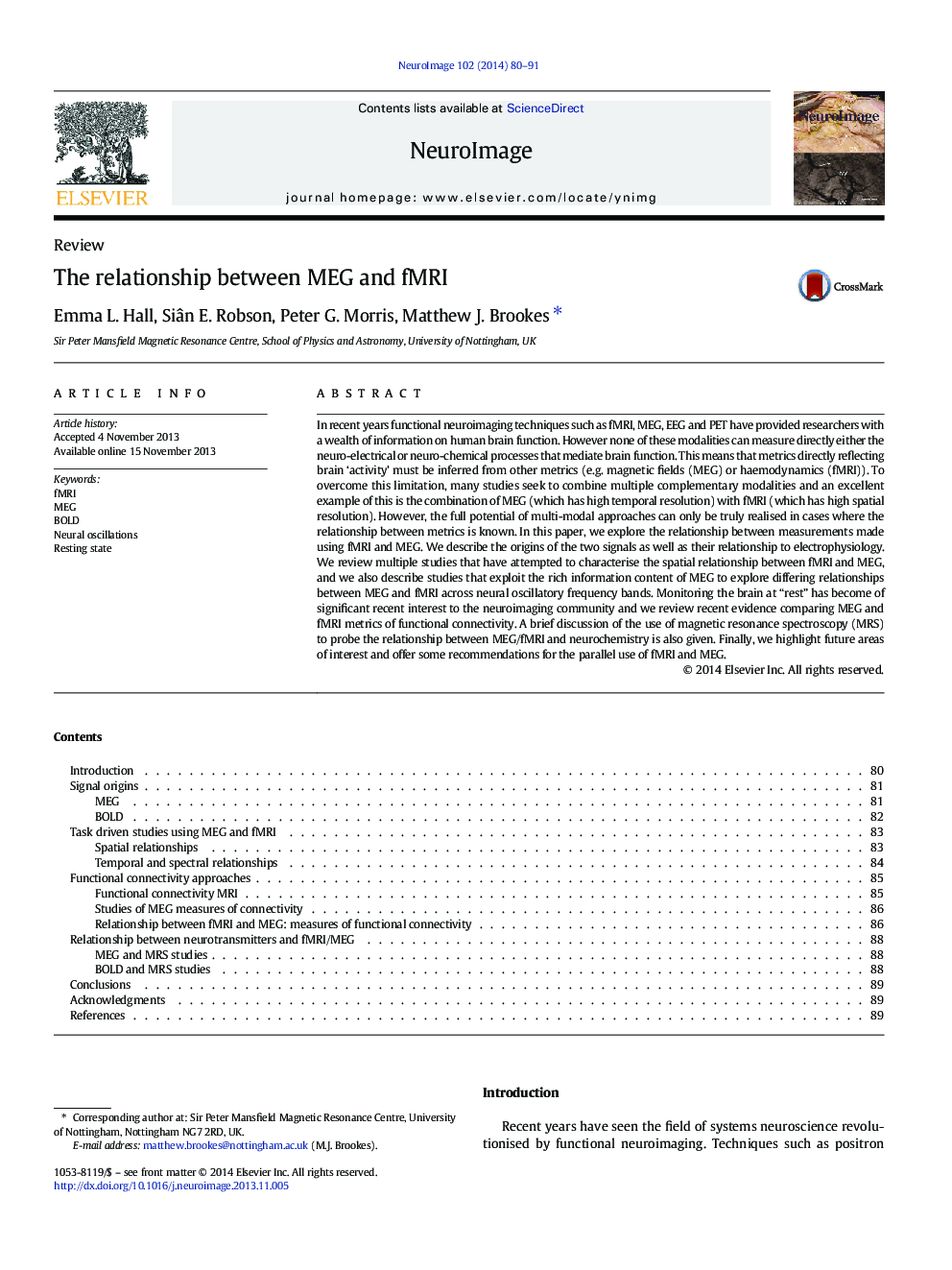| Article ID | Journal | Published Year | Pages | File Type |
|---|---|---|---|---|
| 6026230 | NeuroImage | 2014 | 12 Pages |
â¢This review investigates relationship between MEG and fMRI signals including:â¢The spatial/temporal properties of the MEG and fMRI signals.â¢The relationship of MEG and fMRI with invasive electrophysiology.â¢MEG and fMRI metrics for functional connectivity.â¢Demonstrated links between MEG/fMRI and MRS measurements of neurochemistry.
In recent years functional neuroimaging techniques such as fMRI, MEG, EEG and PET have provided researchers with a wealth of information on human brain function. However none of these modalities can measure directly either the neuro-electrical or neuro-chemical processes that mediate brain function. This means that metrics directly reflecting brain 'activity' must be inferred from other metrics (e.g. magnetic fields (MEG) or haemodynamics (fMRI)). To overcome this limitation, many studies seek to combine multiple complementary modalities and an excellent example of this is the combination of MEG (which has high temporal resolution) with fMRI (which has high spatial resolution). However, the full potential of multi-modal approaches can only be truly realised in cases where the relationship between metrics is known. In this paper, we explore the relationship between measurements made using fMRI and MEG. We describe the origins of the two signals as well as their relationship to electrophysiology. We review multiple studies that have attempted to characterise the spatial relationship between fMRI and MEG, and we also describe studies that exploit the rich information content of MEG to explore differing relationships between MEG and fMRI across neural oscillatory frequency bands. Monitoring the brain at “rest” has become of significant recent interest to the neuroimaging community and we review recent evidence comparing MEG and fMRI metrics of functional connectivity. A brief discussion of the use of magnetic resonance spectroscopy (MRS) to probe the relationship between MEG/fMRI and neurochemistry is also given. Finally, we highlight future areas of interest and offer some recommendations for the parallel use of fMRI and MEG.
